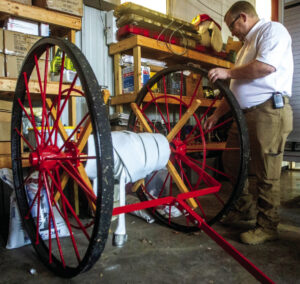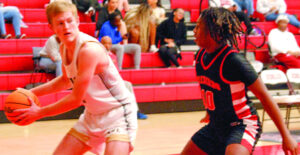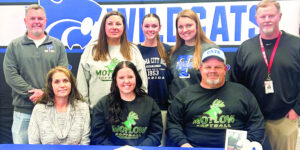Educators reflect on initial school closures after year of pandemic restrictions
It seemed like a dark day March 19, 2020, as Alabama schools were first forced to close because of COVID-19 and students, teachers and the rest of the world sat in worry, not knowing what the future would look like in a pandemic.
One year later, administrators in Russellville City Schools, Franklin County Schools and Northwest-Shoals Community College are reflecting on the journey that has brought schools to this point.
“This time last year, I think we all thought if we could just make it through the end of the school year, the virus would go away, and schools would resume in fall the way they always had,” said RCS Superintendent Heath Grimes. “Maybe we were naive in thinking that, but I don’t think any of us expected it to last as long as it has.”
Since that day in March, schools have had to continually innovate. Franklin County has seen socially-distanced high school graduations in July, drive-thru nursing pinning ceremonies and virtual concerts because of COVID-19 limitations.
FCS Superintendent Greg Hamilton said each part of this process has been full of unexpected and unprecedented changes.
“This time one year ago, we didn’t really know what we were looking at or where things were going to go,” Hamilton said.
NW-SCC President Glenda Colagross said although the college was fortunate to already have a strong distance education program to help navigate the changes, it was still a time full of unknowns.
“It was definitely a tense time for the college and our students,” Colagross said. “We were fortunate to have great leadership from the Alabama Community College System and our local and state health agencies. They provided the college with invaluable information that helped us make appropriate decisions to keep the college operational while keeping our students and employees safe.”
Colagross said initially she, like the majority of people, did not know that changing to distance learning in the spring would be the beginning of changes the schools would have to face.
“I do not believe any of us thought the pandemic was going to last as long as it has,” Colagross said. “In the beginning, we were basically looking at three weeks of remote learning and services and thought everything would return to normal after that.”
Since that point, schools had to reimagine learning and come up with a plan that would allow students the chance to participate in in-person learning while still staying safe.
“The hardest part about this job is making decisions that affect people’s lives, and this pandemic has brought a lot of those decisions,” Grimes said. “With every decision you make, there is going to be someone who is unhappy. At the end of the day, we are making the best decisions we can to keep our students and teachers safe while also taking their mental and emotional health into account as well.”
Grimes said he is thankful that even though the school systems were forced to make difficult decisions, they were able to make them in small phases.
“When schools first closed in March, we were able to come up with a plan to get students through the spring semester,” Grimes said. “Then we were able to take the summer and assess things so we could come up with a plan for students to have in-person learning in the fall.
“If you’d have asked us in the spring to come up with all of that at once, it wouldn’t have worked.”
Grimes said luckily Russellville’s positive COVID-19 numbers have been down, and RCS is now encouraging all students to do in-person learning unless they have a medical reason not to.
“I never would have thought last year that we would find a way to have in-person schooling in the middle of a pandemic, but we have,” Grimes said. “I think that says a lot about our teachers and our students.”
Hamilton said although a lot of people knew teachers were valuable before the pandemic, this brought to light how necessary they really are.
“There is a lot that goes into public education,” Hamilton said. “We knew teachers were a vital part of education, but this just brought to the forefront how valuable schools and those in it really are.”
Hamilton said despite the challenges the schools have had to go through, he believes they are better for it.
“We are more prepared now,” Hamilton said. “I think this proved how resilient we are.”
Colagross agreed and said although the pandemic has not been easy on anyone, it allowed NW-SCC to streamline and find ways to continue improving in the future.
“I believe the additional technology and training that we now have in place for our distance education students and instructors will continue to improve each semester,” Colagross said. “In other words, I believe the pandemic has made us even stronger.”
School administrators are continuing to make decisions to evolve with the changing pandemic climate, and although they do not know what the world will look like one year from today, 2020 has taught that there is light at the end of the tunnel.







